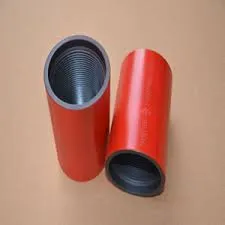- Afrikaans
- Albanian
- Amharic
- Arabic
- Armenian
- Azerbaijani
- Basque
- Belarusian
- Bengali
- Bosnian
- Bulgarian
- Catalan
- Cebuano
- Corsican
- Croatian
- Czech
- Danish
- Dutch
- English
- Esperanto
- Estonian
- Finnish
- French
- Frisian
- Galician
- Georgian
- German
- Greek
- Gujarati
- Haitian Creole
- hausa
- hawaiian
- Hebrew
- Hindi
- Miao
- Hungarian
- Icelandic
- igbo
- Indonesian
- irish
- Italian
- Japanese
- Javanese
- Kannada
- kazakh
- Khmer
- Rwandese
- Korean
- Kurdish
- Kyrgyz
- Lao
- Latin
- Latvian
- Lithuanian
- Luxembourgish
- Macedonian
- Malgashi
- Malay
- Malayalam
- Maltese
- Maori
- Marathi
- Mongolian
- Myanmar
- Nepali
- Norwegian
- Norwegian
- Occitan
- Pashto
- Persian
- Polish
- Portuguese
- Punjabi
- Romanian
- Russian
- Samoan
- Scottish Gaelic
- Serbian
- Sesotho
- Shona
- Sindhi
- Sinhala
- Slovak
- Slovenian
- Somali
- Spanish
- Sundanese
- Swahili
- Swedish
- Tagalog
- Tajik
- Tamil
- Tatar
- Telugu
- Thai
- Turkish
- Turkmen
- Ukrainian
- Urdu
- Uighur
- Uzbek
- Vietnamese
- Welsh
- Bantu
- Yiddish
- Yoruba
- Zulu
well casing coupling
Understanding Well Casing Couplings An Essential Component in Drilling Operations
In the oil and gas industry, one of the critical components of well construction is the well casing. Casing refers to the series of steel pipes that are installed in the wellbore after drilling. The primary purpose of casing is to provide structural integrity to the well, prevent the collapse of the borehole, and isolate different pressure zones that could lead to blowouts or contamination of groundwater. Among the various components used in well casing, well casing couplings play a vital role in ensuring the overall effectiveness and safety of drilling operations.
What Are Well Casing Couplings?
Well casing couplings are mechanical fittings that connect individual sections of casing together. These couplings are designed to ensure a tight and secure joint that can withstand the high pressures and temperatures typically encountered during drilling operations. They come in various designs and materials, depending on the specific requirements of the well and the nature of the geological formations being drilled.
Typically made from high-strength steel, well casing couplings need to exhibit excellent tensile strength, corrosion resistance, and stress resistance. The quality of the couplings is crucial, as any failure in the connection can lead to significant issues, including loss of well control and costly operational delays.
Types of Well Casing Couplings
There are several types of casing couplings available, each designed to meet specific needs in drilling operations
. Some of the most common types include1. Straight Couplings These are the most basic type of couplings and are used to connect two sections of casing of the same diameter. They offer a simple solution for extending the length of the casing and maintaining uniformity in the casing string.
2. Threaded Couplings These couplings feature threads on both ends, allowing them to connect two pieces of casing securely. The threaded design helps to create a robust seal that can withstand the pressures encountered in a well.
well casing coupling

3. Flush Joint Couplings These are designed to maintain the internal diameter of the casing so that the flow of fluids is not impeded. This type of coupling is particularly useful in casing strings where a smooth bore is necessary for efficient fluid movement.
4. Integral Couplings This type of coupling is designed as part of the casing itself rather than as a separate component. Integral couplings provide a seamless connection, which can enhance the strength and reliability of the casing string.
5. Premium Couplings These couplings are engineered for use in more challenging drilling environments. They are designed to offer enhanced sealing capabilities and are often used in high-pressure and high-temperature wells.
Importance of Quality in Well Casing Couplings
The quality of well casing couplings cannot be overstated. Poor-quality couplings can lead to several issues, including leaks, weak joints, and even catastrophic failures. A failure of the coupling in the wellbore can result in lost production, expensive repairs, and potential environmental hazards.
In addition to mechanical strength, couplings must also be resistant to environmental factors such as corrosive fluids and high temperatures. This is essential for ensuring the longevity of the casing and the safety of the entire operation.
Conclusion
In the grand scheme of drilling operations, well casing couplings may seem like small components, but their impact is monumental. They serve as critical junctions in the well casing process, contributing significantly to the structural integrity and safety of oil and gas wells. As drilling technologies advance and more challenging environments are explored, the importance of using high-quality casing couplings only increases.
Investing in quality well casing couplings not only safeguards the immediate drilling operation but also benefits the long-term productivity of the well. As the oil and gas industry continues to evolve, the fundamental principles of good engineering practices must remain at the forefront, ensuring safe and efficient resource extraction.
-
Well Casing Extension Couplings – Applications and InstallationNewsJun.06,2025
-
Types of Crossover Subs in Drilling & CompletionNewsJun.06,2025
-
Key Features of High-Quality Tubing Pup JointsNewsJun.06,2025
-
Installation and Maintenance Tips for Steel Couplings for PipeNewsJun.06,2025
-
How to Select the Right Pup Joint for Oil & Gas OperationsNewsJun.06,2025
-
Applications of Stainless Steel Pipe CouplingsNewsJun.06,2025







